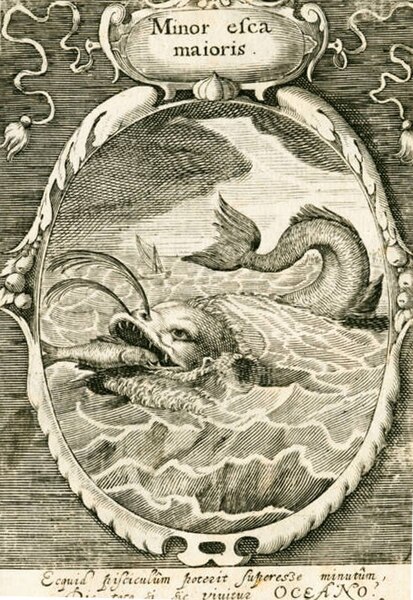A heraldic badge, emblem, impresa, device, or personal device worn as a badge indicates allegiance to, or the property of, an individual, family or corporate body. Medieval forms are usually called a livery badge, and also a cognizance. They are para-heraldic, not necessarily using elements from the coat of arms of the person or family they represent, though many do, often taking the crest or supporters. Their use is more flexible than that of arms proper.
The Dunstable Swan Jewel, a livery badge from about 1400 AD, perhaps of Henry V as Prince of Wales. British Museum
The Château de Blois, with the porcupine of Louis XII
Imprese from Jacobus Typotius, Symbola Divina et Humana (Prague, 1601), engraved by Aegidius Sadeler II.
Salamander badge of King Francis I of France, with letter "F", Château de Chambord
An emblem is an abstract or representational pictorial image that represents a concept, like a moral truth, or an allegory, or a person, like a monarch or saint.
The Wilton Diptych (c. 1395–1399) features angels wearing White Hart (a deer), the personal emblem of King Richard II of England.
House of the Prince of Naples in Pompeii Triclinium Emblem on North Wall
"The big eat the small", a political emblem from an emblem book, 1617







